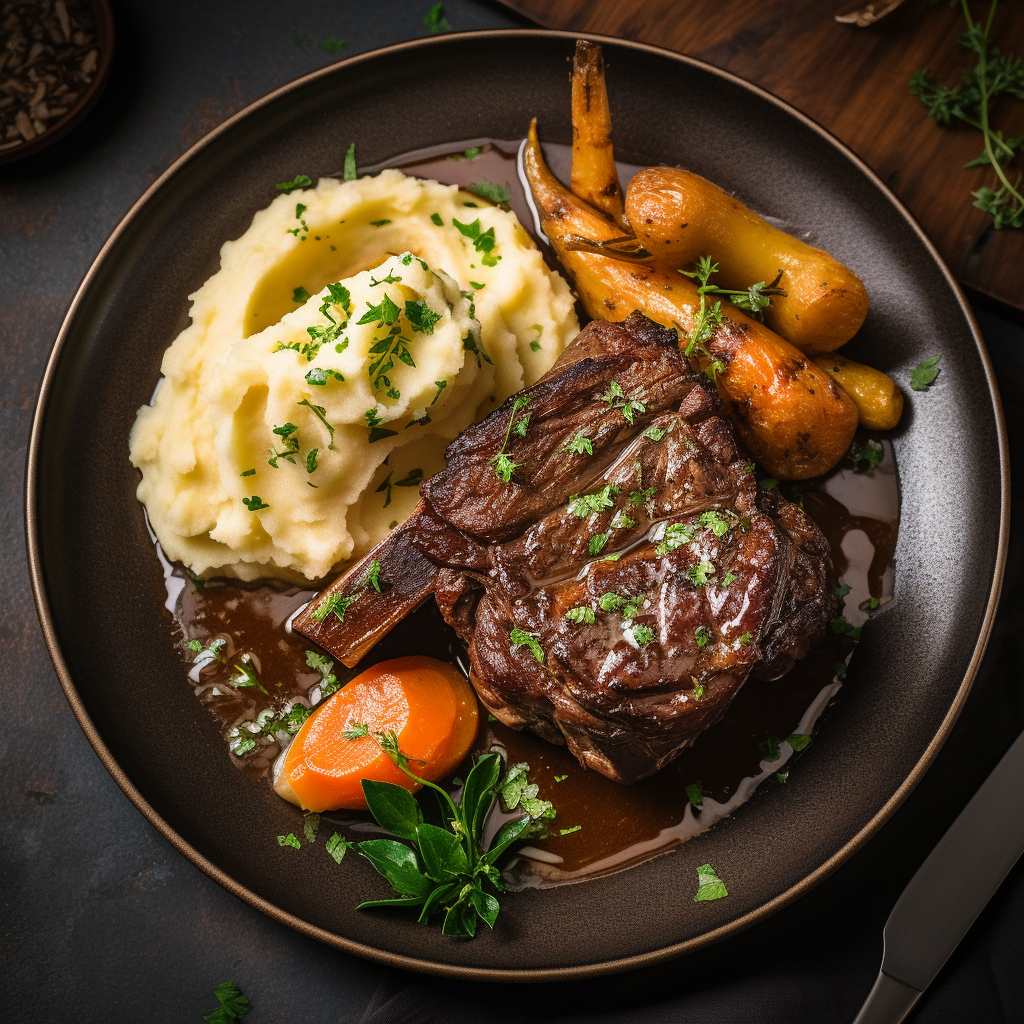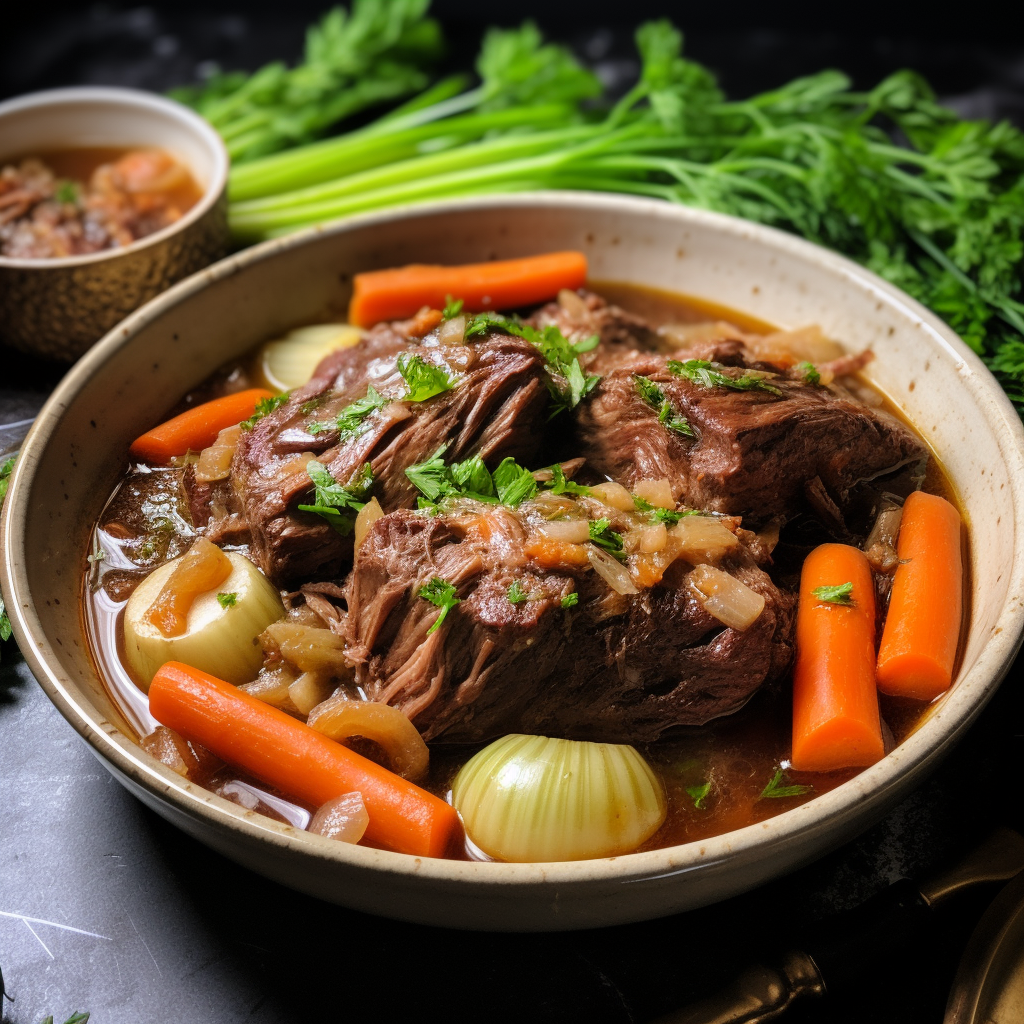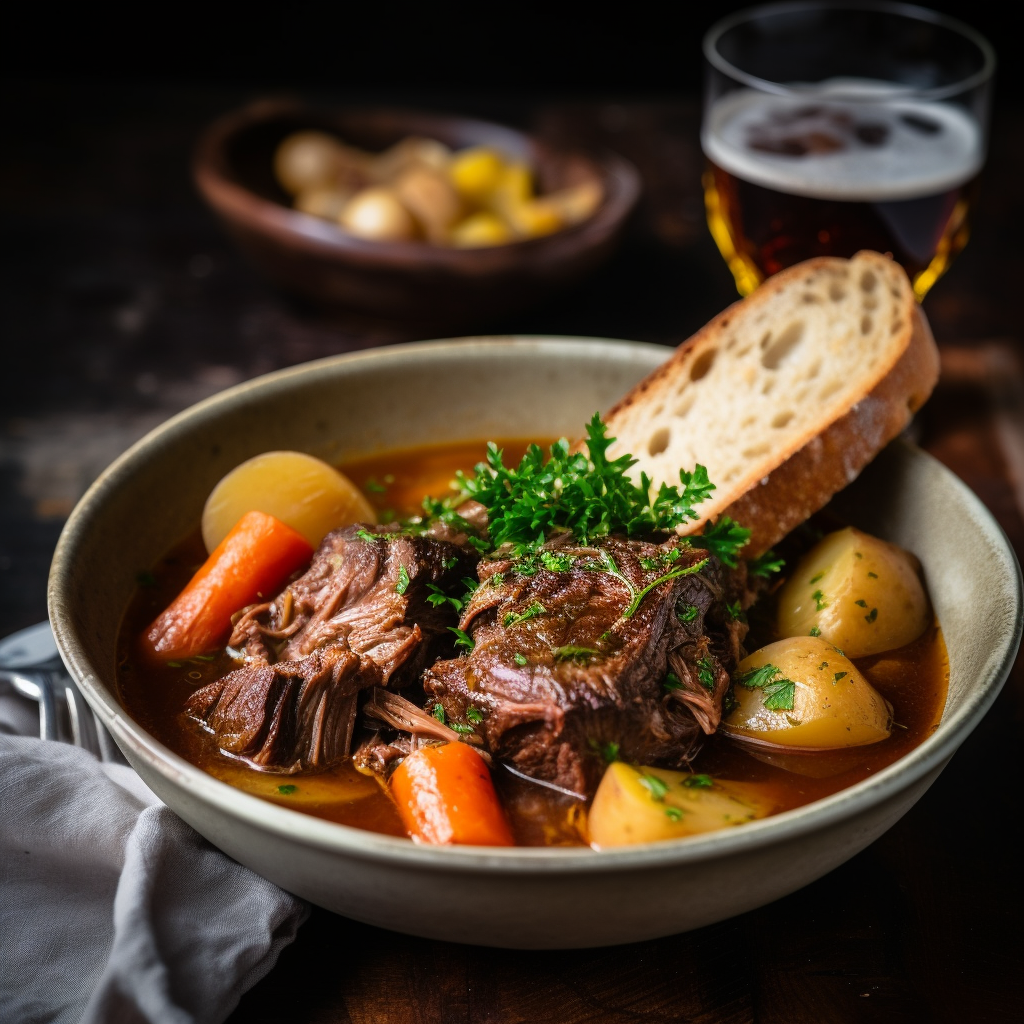Introduction
Beef shank, a cut taken from the leg of a cow, requires patience and time to become tender. So, how long does beef shank take to get tender? With the right techniques, you can transform this tough cut into a melt-in-your-mouth dish. Beef shank is full of connective tissue, which, when cooked slowly, turns into rich, flavorful gelatin, creating a dish that is both hearty and delicious.
In this guide, we’ll explore how long it takes for beef shank to get tender, the best methods to prepare it, and tips on ensuring your dish is a success. Whether you’re braising the shank, slow cooking it, or using a pressure cooker, this article will provide the essential information needed to get the perfect, tender results every time.
What is Beef Shank? Understanding the Cut
Beef shank is a cut of meat taken from the lower leg of the cow, both front and back legs. The muscles here are used extensively by the animal, which results in a lean but tough piece of meat with a lot of connective tissue and sinew. This connective tissue is full of collagen, which is tough in its raw form but melts into a tender, gelatinous consistency when cooked low and slow.
Why Does Beef Shank Require Time to Cook?
The reason beef shank takes time to cook is because of the high collagen content. Collagen is a structural protein that, when exposed to heat and moisture for extended periods, breaks down into gelatin. This transformation gives the meat a luscious, tender texture, making it perfect for hearty stews, braises, and soups.
However, cooking beef shank quickly or at too high a temperature can leave the collagen intact, making the meat chewy and tough. Thus, the key to achieving perfectly tender beef shank lies in using the correct cooking methods, which focus on low heat and long cooking times to allow the collagen to break down properly.
Best Cooking Methods for Tender Beef Shank
Now that we understand the anatomy of beef shank and why it requires longer cooking times, let’s delve into the best methods for turning this tough cut of meat into a tender, flavorful dish. Each of these methods relies on the principle of low-and-slow cooking to break down the collagen and create a mouthwatering meal.
1. Slow Braising

Braising is one of the most traditional and effective methods for cooking beef shank to tender perfection. This method involves first browning the meat on high heat to create a flavorful crust, then cooking it slowly in a liquid (usually broth, wine, or a combination of both) over low heat. The slow cooking allows the collagen to dissolve, resulting in a rich, tender meat.
Braising Time for Beef Shank:
- Total Time: 3-4 hours at a low temperature (about 300°F or 150°C).
Here’s a basic braising method to follow:
- Season the beef shank with salt, pepper, and other preferred spices or herbs.
- Heat oil in a heavy, oven-safe pot (such as a Dutch oven), and sear the shank on all sides until browned.
- Add aromatics like onions, garlic, carrots, and celery to the pot for flavor.
- Pour in enough liquid (such as beef broth, red wine, or a mixture of both) to cover the shank halfway.
- Cover the pot and transfer it to a preheated oven. Let it cook for 3-4 hours, or until the meat is tender and falling off the bone.
The result is a deeply flavorful, fall-apart-tender beef shank. Pair it with mashed potatoes, polenta, or crusty bread to soak up the delicious sauce. For more tips on braising, you can explore this guide to braising beef, which provides additional details on getting the best results from this cooking method.
2. Slow Cooking
A slow cooker is another excellent tool for cooking beef shank. The slow cooker is perfect for those who want a hands-off approach to tender meat. By cooking the beef shank at a low temperature for several hours, the connective tissue breaks down, resulting in tender, flavorful meat.

Slow Cooking Time for Beef Shank:
- Total Time: 6-8 hours on low heat.
Here’s a simple slow-cooker recipe for beef shank:
- Sear the beef shank in a pan to develop a caramelized crust. This step is optional but highly recommended for added flavor.
- Place the seared shank into the slow cooker along with vegetables like carrots, onions, and garlic.
- Add liquid (beef broth, red wine, or a combination) to cover the shank halfway.
- Set the slow cooker to low and cook for 6-8 hours, or until the beef is tender and easily pulls apart with a fork.
Slow-cooked beef shank is perfect for hearty stews or as a stand-alone dish served with sides like mashed potatoes. For more ideas, check out this beef pot pie recipe that can also be adapted for slow cooking beef shank.
3. Pressure Cooking
If you’re short on time but still want tender beef shank, a pressure cooker is the best option. Pressure cooking accelerates the tenderizing process by cooking the beef under high pressure, allowing the collagen to break down quickly without drying out the meat. Although it’s faster, pressure cooking doesn’t compromise on flavor or tenderness.
Pressure Cooking Time for Beef Shank:
- Total Time: 1-1.5 hours.
Here’s how to pressure cook beef shank:
- Season and sear the shank in the pressure cooker on the sauté setting.
- Add the liquid (broth or wine) and any aromatics, like onions, garlic, and herbs.
- Secure the lid and set the pressure cooker to high. Cook for 60-90 minutes.
- Once done, release the pressure and check for tenderness. If necessary, cook for an additional 10-15 minutes.
Pressure cooking is perfect for busy days when you want a flavorful, tender meal in a shorter time. For a detailed comparison of pressure cooking versus slow cooking, consider checking out this slow-cooked beef shank recipe which can easily be adapted for pressure cooking.
How Long Does Beef Shank Take to Get Tender?
The time it takes for beef shank to become tender depends on the cooking method used. Here’s a summary of the average cooking times for each method:
- Braising: 3-4 hours at 300°F (150°C).
- Slow Cooking: 6-8 hours on low heat.
- Pressure Cooking: 1-1.5 hours under high pressure.
Factors That Influence Cooking Time
Several factors can influence the time it takes for beef shank to become tender:
- Size of the Shank: Larger pieces of beef shank will naturally take longer to cook. If you have a particularly large piece, be prepared to extend the cooking time.
- Temperature: Lower temperatures require longer cooking times, but they allow for more gradual breaking down of collagen, resulting in more tender meat.
- Liquid: Make sure the beef shank is partially submerged in liquid during cooking. This ensures the meat stays moist and the collagen breaks down effectively.
By understanding these factors, you can better adjust your cooking method and time to achieve the best possible results.
Key Tips for Achieving Tender Beef Shank
Here are some essential tips to ensure you achieve perfectly tender beef shank every time:
- Use Moist Heat: Beef shank requires a method that incorporates moisture, such as braising or slow cooking. Dry heat, such as roasting, won’t effectively break down the collagen in the meat.
- Cook Low and Slow: Whether you’re braising, slow cooking, or pressure cooking, the goal is to cook the beef shank at a low temperature over an extended period. This allows the collagen to break down slowly and evenly, resulting in tender, flavorful meat.
- Add Aromatics: When cooking beef shank, don’t be afraid to add aromatics like onions, garlic, herbs, and spices. These will infuse the meat with flavor as it cooks.
- Rest the Meat: After cooking, allow the beef shank to rest for at least 10 minutes before serving. This helps the juices redistribute throughout the meat, ensuring it stays moist and tender.
- Check for Tenderness: Always check for tenderness before serving. The meat should be easy to pull apart with a fork, indicating that the collagen has fully broken down.
What to Serve with Beef Shank
Beef shank is a hearty, flavorful cut that pairs beautifully with a variety of sides. Here are some classic options:
1. Mashed Potatoes
Creamy mashed potatoes are the perfect accompaniment to tender beef shank. The richness of the mashed potatoes complements the savory beef and the flavorful braising liquid or sauce. For a recipe, check out this mashed potatoes and gravy guide.
2. Roasted Root Vegetables
Roasted vegetables, such as carrots, parsnips, and potatoes, pair wonderfully with beef shank. Their natural sweetness and earthy flavors contrast the richness of the meat.
3. Polenta
Polenta offers a creamy, hearty base that soaks up the flavors of the braised or slow-cooked beef shank. Its mild flavor allows the beef to shine while adding a satisfying texture.
4. Crusty Bread
For a simple yet delicious side, serve beef shank with a loaf of crusty bread. It’s perfect for soaking up the savory sauce or broth that comes from braising or slow cooking.
5. Green Vegetables
Balance out the richness of the beef shank with a side of steamed or sautéed green vegetables like spinach, broccoli, or green beans.
Variations and Recipe Ideas for Beef Shank

Now that you know the basics of cooking beef shank, you can experiment with different flavor profiles and recipe variations. Here are a few ideas to inspire your next dish:
1. Osso Buco
Osso buco is an Italian classic that uses cross-cut sections of beef or veal shank. The dish is typically braised with white wine, broth, and vegetables, and is often served with gremolata (a mixture of lemon zest, garlic, and parsley) for added freshness. This hearty dish is perfect for special occasions and pairs beautifully with risotto or polenta.
2. Beef Shank Stew
Beef shank works wonderfully in hearty stews. Add root vegetables, potatoes, and a rich broth for a filling and flavorful meal. Slow cook or pressure cook the stew until the beef is tender and the vegetables have absorbed the savory flavors of the broth.
3. Asian-Inspired Beef Shank
For a twist on traditional braising, try cooking beef shank with Asian flavors. Ingredients like soy sauce, ginger, garlic, and star anise create a rich, umami-filled dish. Serve the tender beef over steamed rice or noodles for a comforting and delicious meal.
Conclusion
Cooking beef shank to tender perfection is a rewarding process that requires patience and the right techniques. Whether you choose to braise, slow cook, or use a pressure cooker, the key is to give the collagen enough time to break down, resulting in melt-in-your-mouth tenderness.
With this comprehensive guide, you now have all the information you need to cook beef shank successfully. From understanding the anatomy of the cut to mastering various cooking methods, you’re ready to create a delicious meal that will impress family and friends.
For more inspiration, don’t forget to check out our ultimate chuck roast guide or try your hand at making a hearty beef pot pie to complement your culinary skills.

